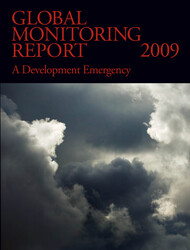
Ukraine: Technical Assistance Report-Review of the Counterparty Eligibility for Monetary Policy Operations and the Emergency Liquidity Assistance Framework
Ukraine: Technical Assistance Report-Review of the Counterparty Eligibility for
Monetary Policy Operations and the Emergency Liquidity Assistance Framework
READ MORE...
Volume/Issue:
Volume 2025
Issue 067
Publication date:
ISBN:
Add to Cart by clicking price of the language and format you'd like to purchase
Available Languages and Formats
Topics covered in this book
This title contains information about the following subjects.
Click on a subject if you would like to see other titles with the same subjects.
Central Banking , Monetary Policy Operations , Counterparty Eligibility , Emergency Liquidity Assistance , Lender of Last Resort , Crises Management , Financial crises , Ukraine
Summary
The IMF’s Monetary and Capital Markets Department conducted a technical assistance engagement with the National Bank of Ukraine (NBU) to enhance the NBU’s counterparty eligibility criteria for monetary policy lending operations and strengthen its Emergency Liquidity Assistance (ELA) framework. The mission undertook a comprehensive review of the NBU’s counterparty eligibility criteria and key recommendations focused on integrating financial soundness assessments to ensure that only solvent entities are eligible for participation, thereby mitigating systemic risks. In this regard, the mission recommended implementing access limitations or suspension measures for counterparties that do not comply with solvency requirements. These measures should be as automatic as possible, operating within a clear regulatory framework. Additionally, the mission aimed to strengthen the ELA framework to enable rapid responses to potential liquidity crises. To this end, it recommended expanding the types of collateral eligible for ELA operations to encompass assets that are also eligible for monetary policy operations. Furthermore, the mission emphasized the need to improve internal procedures and decision-making processes, as well as operational readiness, to ensure timely access to emergency liquidity for solvent banks.
Copyright © 2010 - 2025
Powered by:
AIDC



